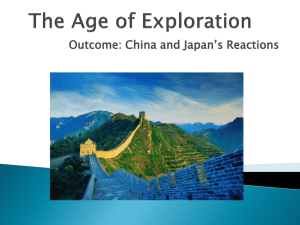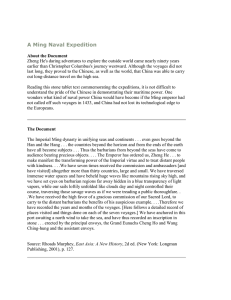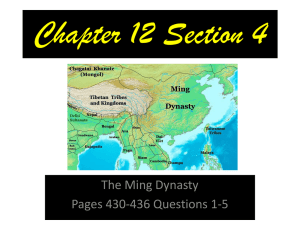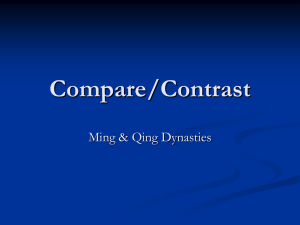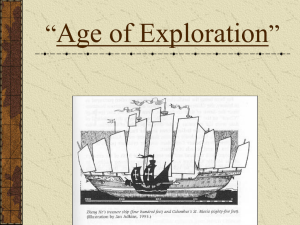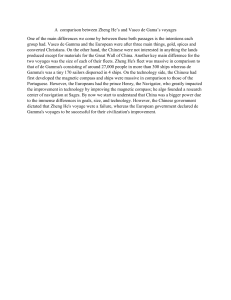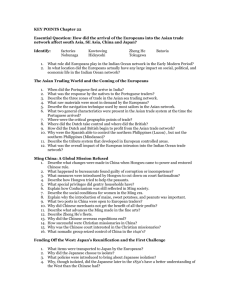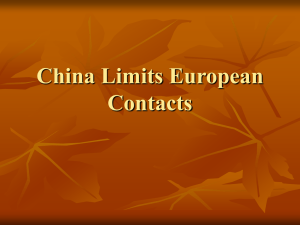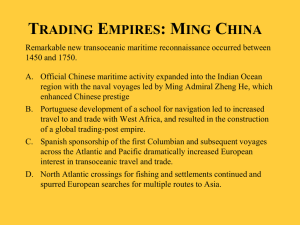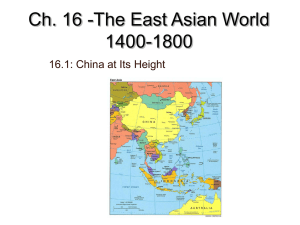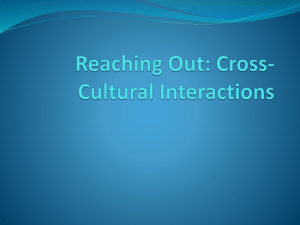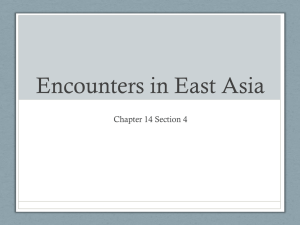The Age of Exploration
advertisement
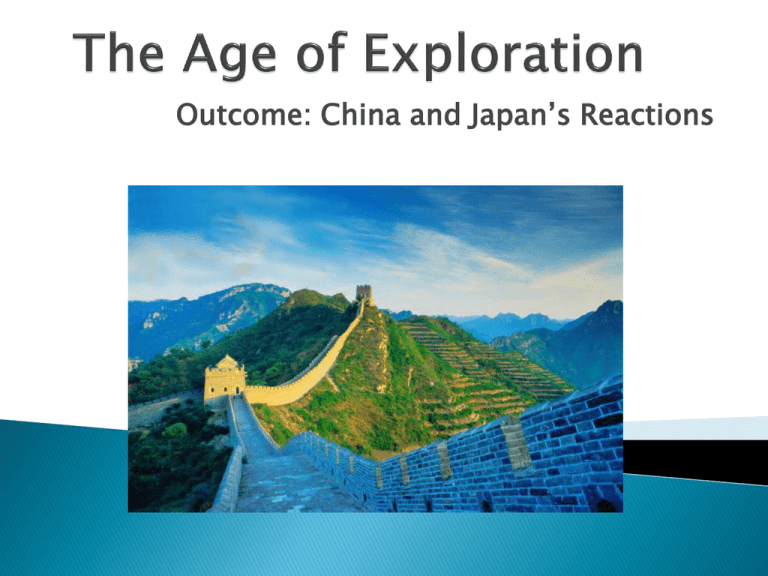
Outcome: China and Japan’s Reactions Setting the Stage a. East Asia was a hot spot for luxury goods b. Many Europeans were looking to trade with China and Japan 1. Ming China 2. a. The Chinese people had rebelled and driven out their Mongol rulers and had established the Ming Dynasty (1368-1644) b. China expected Europe to pay tribute to Ming leaders; they did not want Europeans threatening the peace and prosperity the Ming had brought to China 3. The Voyages of Zheng He a. Hongwu and son Yonglo were curious about the outside world and launched voyages of exploration b. Chinese Admiral Zheng He led seven voyages c. Voyages ranged from Southeast Asia to eastern Africa d. From 40 to 300 ships sailed on each voyage e. Some ships were 400 feet long (p. 537) f. Voyages included sailors, soldiers, carpenters, interpreters, accountants, doctors and religious leaders g. After 7th voyage and Zheng He’s death, China withdrew into isolation and destroyed the fleet Zheng He Zheng He’s Voyages In 1498, Da Gama reached Calcutta, China’s favorite port! 4. Ming Relations with Foreign Countries a. China’s trade policies in the 1500s reflected isolation b. Only government was allowed to conduct foreign trade c. China did not industrialize for two reasons i. ii. Idea of commerce offended China’s Confucian beliefs Chinese economic policies favored agriculture 6. The Manchus a. The Ming government had ruled for 200 years and was weakening b. The Manchus, people from Manchuria, invaded China and established Qing Dynasty which ruled for 260 years c. Qing expanded China to include Taiwan, Chinese Central Asia, Mongolia, & Tibet d. To the Chinese, their country, called the Middle Kingdom, had been the cultural center of the universe for 2,000 years e. If foreign states wanted to trade with China, they would have to follow Chinese rules such as paying tribute and trading only at special trading ports f. The Dutch accepted these restrictions and were allowed to trade g. Kowtow ritual: kneeling in front of the emperor and touching forehead to ground 9 times 6. Japan a. In 1947, civil war shattered Japan’s feudal system and the country became chaotic b. Warrior chieftains called daimyos became lords in a new Japanese feudalistic system 7. Contact Between Europe and Japan a. Europeans began coming to Japan in the 16th century and were welcomed b. Within a century, the aggressive Europeans had worn out their welcome c. The Portuguese brought clocks, eyeglasses, tobacco, and firearms d. By 1600, European missionaries had converted 300,000 Japanese to Christianity e. After peasant rebellion (most were Christian) the shoguns ruthlessly persecuted Christians and led to the formation of an exclusion policy 8. The Closed Country Policy a. 1969 the shoguns sealed Japan’s borders and excluded merchants and missionaries b. Only port of Nagasaki remained open but only to Dutch and Chinese traders c. Lasted for more than 200 years d. Japanese were forbidden to leave so as to not bring back foreign ideas e. Japan wanted to continue to develop as a selfsufficient country Result: Europeans begin to explore west across the Atlantic Ocean to the New World.
